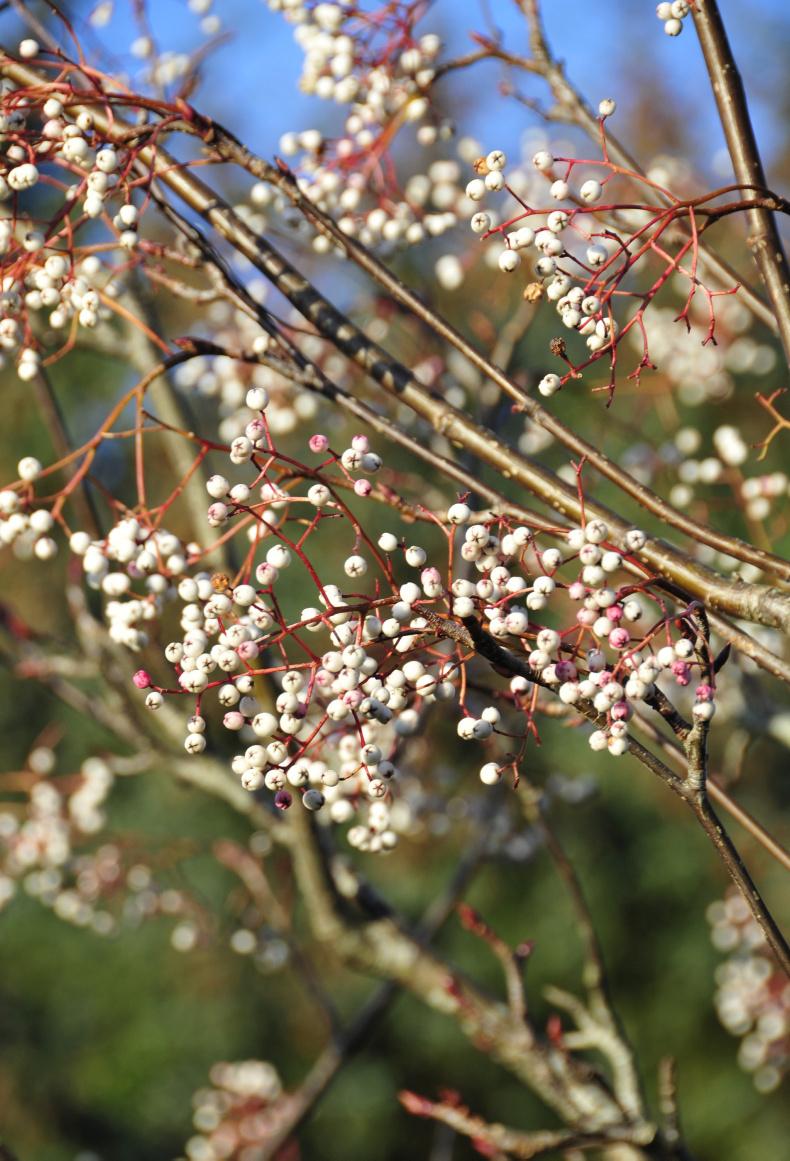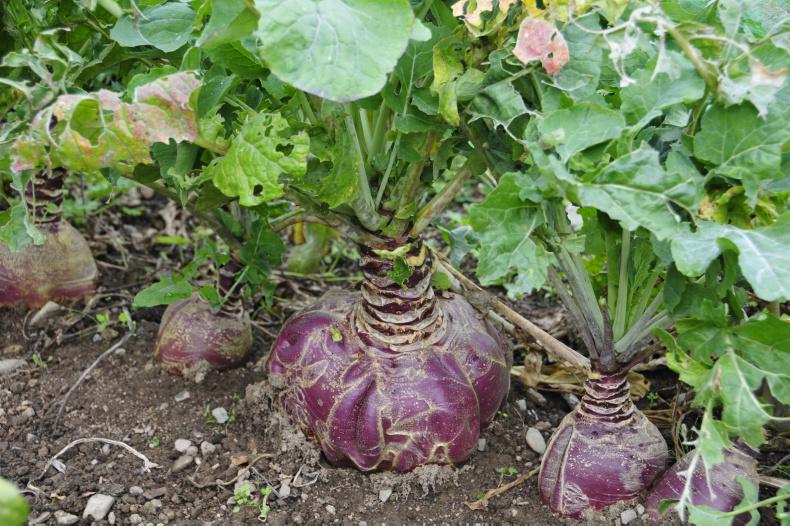There is great satisfaction in looking at a tree that you planted reach 30m, poplar can do it easily on good land, with a trunk at head-height that you cannot get your arms much more than halfway around. Birch can reach 20m in less than a generation, taking that to be roughly 33 years. Remarkable it is by any measure and if you actually raised the tree from seed you collected, ever more so. While commercial forestry uses tree seeds of proven quality and provenance, there is always a place for sowing a few seeds collected from your own trees or locally. It keeps the gene pool wide, and it is free.
Most kinds of tree seeds come down with the leaves, providing protection and rooting material eventually. It has been a remarkable year for berried tree seeds, hawthorn, rowan and holly for instance. Oaks and beech have had heavy seed years in recent years and often take several years to recovery but that is not unusual. These ‘on-years’ are called ‘mast’ years, mast being an old word for tree seeds.
Sycamore and ash appear to be having a good seed crop in all areas. Ash can be slow to shed, and both are a real nuisance in a garden, thousands of seedlings coming up in the wrong place.
Trees are mostly so easy to raise that many trees readily self-sow. All the native trees such as ash, oak, elm, alder, hazel and rowan do so but also non-natives from Europe, including beech, sycamore and horse chestnut.

White sorbus berries.
Most people choose to sow the seeds of trees with large seeds: chestnut, oak, beech, sweet chestnut, walnut and hazelnut. But the small seeds of birch and alder are easy to grow too if somewhat more tricky to collect, but, the seeds being small, a little goes a long way. Sow, when collected, all tree seeds that are not berries. The large seeds lose their viability if they are allowed to dry out.
Gather tree nuts and place them in a plastic bag with some wet leaves or moss. Acorns may have already sprouted when collected but if these are handled carefully they will continue to germinate when sown. Do not keep them for more than a day or two in the plastic bag and do not seal the bag – allow some air to get in.
Berried trees, such as rowan, holly, crabapple, apple, guelder rose, elderberry, cornus and cotoneaster, some of which are garden trees, usually have a period of seed dormancy for a second winter when most germinate. The berries can be mushed up to rot down the berries’ coating and mixed with clean sand in a freezer bag and stored in a cool place outdoors or in a fridge until sowing in spring when better germination occurs.
Sow the seeds in pots or in the open ground in a sunny spot in open soil, ideally light and well-drained ground. Any of the large seeds can be sown in this way, in a little furrow about 5cm deep and covered lightly with soil.
Space the seeds about 20cm apart in the furrow to allow them space to grow when they sprout which they will do in winter underground and the shoots appear in spring.
Small seeds are best lightly raked in, or given a light cover of a few millimetres of clean sand from a riddle. Hand-weed or hoe the rows to keep them weed-free. Be careful, collecting and sowing tree seeds is compelling but think about where the seedlings will be planted when they are two years old.

Swede turnips.
Lasting winter
vegetables
Although many people abandon the vegetable garden in autumn, it is just the start of winter vegetables – swede turnips, carrots, parsnips, cabbage, Brussels sprouts, leeks, Swiss chard and some greens of oriental origin notably mustard and mizuna. Even though a wide choice of out-of-seasonal vegetables is available in shops, home-grown vegetables are still important. While swede turnips can be left in the ground until used, they can be lifted and stored too.
Carrots are always best lifted and stored because of the damage likely from carrot root flies, slugs and root-rot diseases. Parsnips last very well in the ground, but can be affected by sciarid flies and canker disease. Cabbage is normally left outside, if it is a hardy variety, but can be cut with fully formed hard heads and stored too. Leeks and Swiss chard stand in the ground very well until picked.
The traditional way to store root vegetables was in a pit of soil layered over straw, and it is very successful, though perhaps a little more effort than people might want to undertake. Storage in a cool shed, ideally with an earthen floor for some moisture is very successful. Concrete floors can taint vegetables if the concrete is new and some barrier should be laid over it, such as straw or peat. Keep a watch for rodent activity.
Trees, shrubs and roses
Planting of bare-root deciduous trees, hedging and shrubs can continue during good weather. Pot-grown trees and shrubs can also be planted, of course. Check that young trees are securely staked as wind-rocking can seriously damage, and even kill, young trees.
Flowers
Spring bulbs should be in the ground by now but plant soon. Tulips andalliums tolerate later planting. Bedding plants for spring colour should be put in now. Lift dahlias, begonias and gladiolus in frosty localities to prevent damage, or cover them with soil in milder areas.
Fruit, vegetables and herbs
Plant new fruit trees and bushes. Dig over vegetable ground, removing old crops. Store vegetables that can be over-wintered in a pit or cold shed. Control weeds over areas of ground that will be dug over later. Spread compost before digging in.
Lawns
Lawn mosskiller can still be used. The moss will grow strongly until early May and can have built up to severe levels. Occasional mowing in winter is a good idea if the soil is not too wet. Grass tends to grow a little over winter and an occasional mowing will keep it right.
Greenhouse and house plants
Remove all debris and dead plants and ventilate occasionally. Water very little to reduce the risk of grey mould disease. Set up an electfrost protection heater to protect tender plants, such as geraniums or fuchsias, and insulate the glass with sheets of bubble wrap.
There is great satisfaction in looking at a tree that you planted reach 30m, poplar can do it easily on good land, with a trunk at head-height that you cannot get your arms much more than halfway around. Birch can reach 20m in less than a generation, taking that to be roughly 33 years. Remarkable it is by any measure and if you actually raised the tree from seed you collected, ever more so. While commercial forestry uses tree seeds of proven quality and provenance, there is always a place for sowing a few seeds collected from your own trees or locally. It keeps the gene pool wide, and it is free.
Most kinds of tree seeds come down with the leaves, providing protection and rooting material eventually. It has been a remarkable year for berried tree seeds, hawthorn, rowan and holly for instance. Oaks and beech have had heavy seed years in recent years and often take several years to recovery but that is not unusual. These ‘on-years’ are called ‘mast’ years, mast being an old word for tree seeds.
Sycamore and ash appear to be having a good seed crop in all areas. Ash can be slow to shed, and both are a real nuisance in a garden, thousands of seedlings coming up in the wrong place.
Trees are mostly so easy to raise that many trees readily self-sow. All the native trees such as ash, oak, elm, alder, hazel and rowan do so but also non-natives from Europe, including beech, sycamore and horse chestnut.

White sorbus berries.
Most people choose to sow the seeds of trees with large seeds: chestnut, oak, beech, sweet chestnut, walnut and hazelnut. But the small seeds of birch and alder are easy to grow too if somewhat more tricky to collect, but, the seeds being small, a little goes a long way. Sow, when collected, all tree seeds that are not berries. The large seeds lose their viability if they are allowed to dry out.
Gather tree nuts and place them in a plastic bag with some wet leaves or moss. Acorns may have already sprouted when collected but if these are handled carefully they will continue to germinate when sown. Do not keep them for more than a day or two in the plastic bag and do not seal the bag – allow some air to get in.
Berried trees, such as rowan, holly, crabapple, apple, guelder rose, elderberry, cornus and cotoneaster, some of which are garden trees, usually have a period of seed dormancy for a second winter when most germinate. The berries can be mushed up to rot down the berries’ coating and mixed with clean sand in a freezer bag and stored in a cool place outdoors or in a fridge until sowing in spring when better germination occurs.
Sow the seeds in pots or in the open ground in a sunny spot in open soil, ideally light and well-drained ground. Any of the large seeds can be sown in this way, in a little furrow about 5cm deep and covered lightly with soil.
Space the seeds about 20cm apart in the furrow to allow them space to grow when they sprout which they will do in winter underground and the shoots appear in spring.
Small seeds are best lightly raked in, or given a light cover of a few millimetres of clean sand from a riddle. Hand-weed or hoe the rows to keep them weed-free. Be careful, collecting and sowing tree seeds is compelling but think about where the seedlings will be planted when they are two years old.

Swede turnips.
Lasting winter
vegetables
Although many people abandon the vegetable garden in autumn, it is just the start of winter vegetables – swede turnips, carrots, parsnips, cabbage, Brussels sprouts, leeks, Swiss chard and some greens of oriental origin notably mustard and mizuna. Even though a wide choice of out-of-seasonal vegetables is available in shops, home-grown vegetables are still important. While swede turnips can be left in the ground until used, they can be lifted and stored too.
Carrots are always best lifted and stored because of the damage likely from carrot root flies, slugs and root-rot diseases. Parsnips last very well in the ground, but can be affected by sciarid flies and canker disease. Cabbage is normally left outside, if it is a hardy variety, but can be cut with fully formed hard heads and stored too. Leeks and Swiss chard stand in the ground very well until picked.
The traditional way to store root vegetables was in a pit of soil layered over straw, and it is very successful, though perhaps a little more effort than people might want to undertake. Storage in a cool shed, ideally with an earthen floor for some moisture is very successful. Concrete floors can taint vegetables if the concrete is new and some barrier should be laid over it, such as straw or peat. Keep a watch for rodent activity.
Trees, shrubs and roses
Planting of bare-root deciduous trees, hedging and shrubs can continue during good weather. Pot-grown trees and shrubs can also be planted, of course. Check that young trees are securely staked as wind-rocking can seriously damage, and even kill, young trees.
Flowers
Spring bulbs should be in the ground by now but plant soon. Tulips andalliums tolerate later planting. Bedding plants for spring colour should be put in now. Lift dahlias, begonias and gladiolus in frosty localities to prevent damage, or cover them with soil in milder areas.
Fruit, vegetables and herbs
Plant new fruit trees and bushes. Dig over vegetable ground, removing old crops. Store vegetables that can be over-wintered in a pit or cold shed. Control weeds over areas of ground that will be dug over later. Spread compost before digging in.
Lawns
Lawn mosskiller can still be used. The moss will grow strongly until early May and can have built up to severe levels. Occasional mowing in winter is a good idea if the soil is not too wet. Grass tends to grow a little over winter and an occasional mowing will keep it right.
Greenhouse and house plants
Remove all debris and dead plants and ventilate occasionally. Water very little to reduce the risk of grey mould disease. Set up an electfrost protection heater to protect tender plants, such as geraniums or fuchsias, and insulate the glass with sheets of bubble wrap.








 This is a subscriber-only article
This is a subscriber-only article









SHARING OPTIONS: